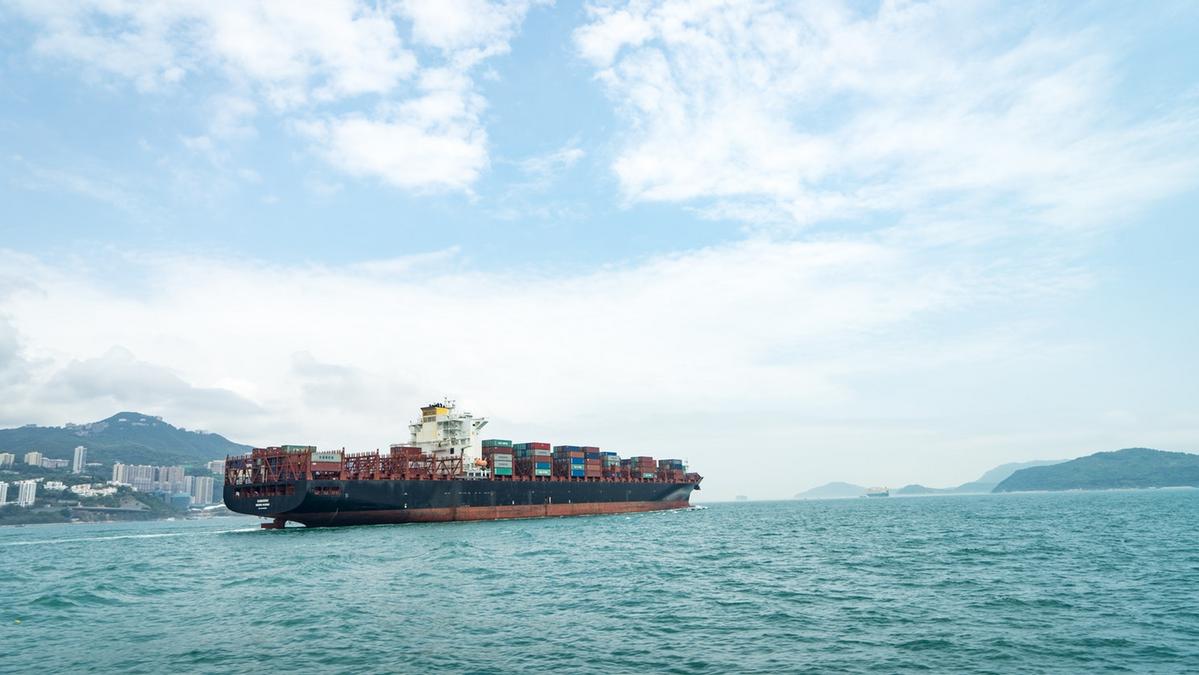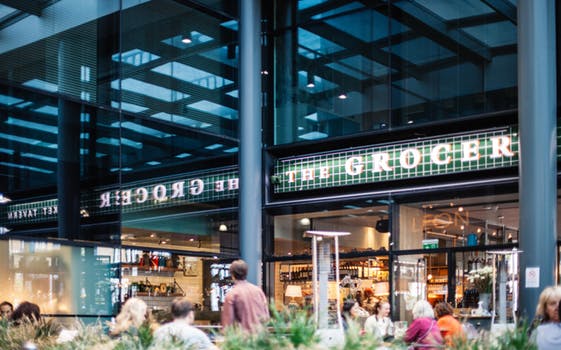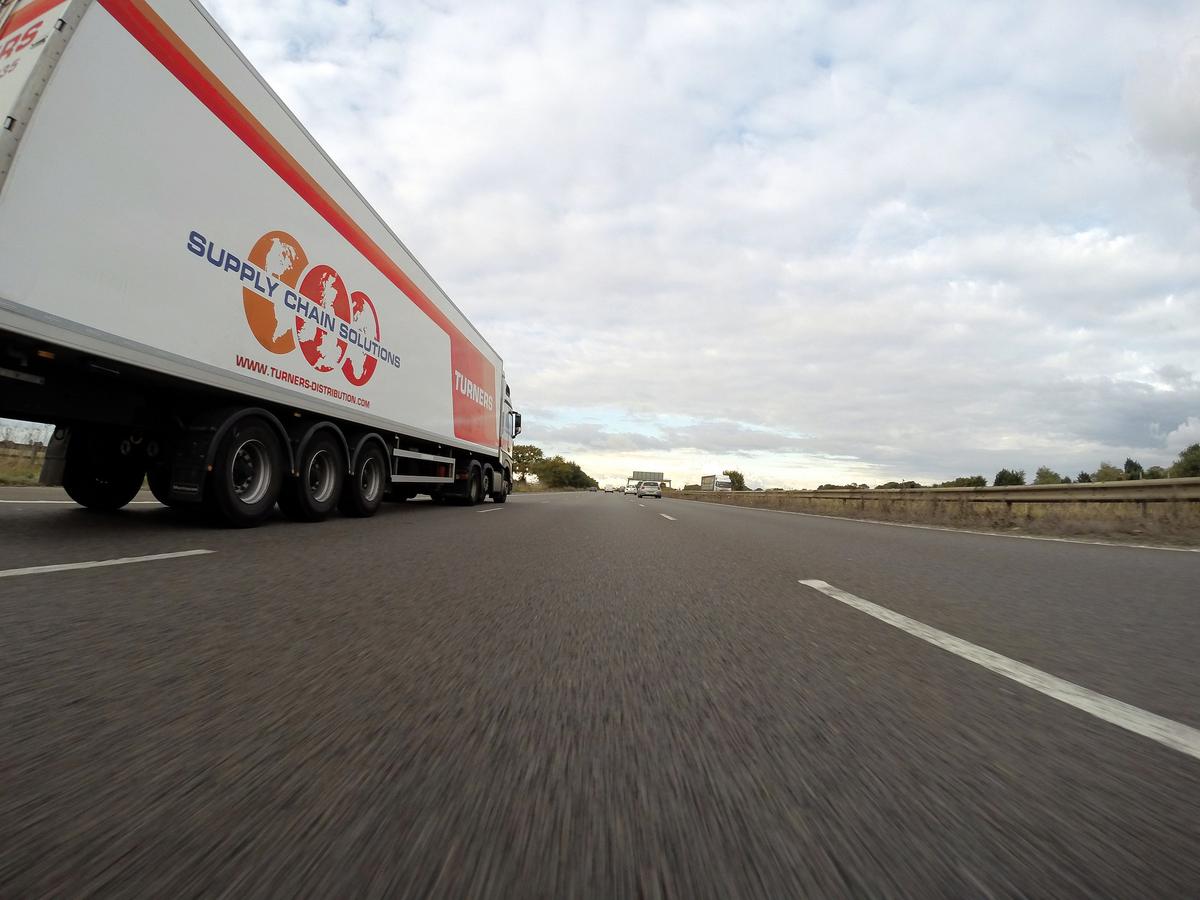Insurance BlogMonday, February 04 2019
ORLANDO, Fla. — It is the year 2019 already and the promise for Smart Cities in the U.S. According to BW Smart Cities, about 100 cities are expected to become representative “smart-cities” by the year 2020 and be on par with smart cities across the world. Yes, that’s next year! The United Nations predicts a world population of 9.7 billion by 2050, leading to an urban population boom of 63%. Driven by the rise in global population and urbanization, smart cities are set to alter our perceptions of society as technology and big data turn cities into efficient marketplaces for essential services. The modern smart city is usually a city that has partnered with private and public enterprises and businesses to leverage technology to:
Thursday, November 29 2018
ORLANDO, Fla.—Kids around the country are eagerly expecting their gifts this Holiday Season. In their minds, Santa Claus on his sleigh goes around the world and somehow always ends up at their house and leave their Christmas wishes under the tree. And all those Tonka trucks, ugly sweaters and, electronics bought online have to get delivered to more than 126 million individual homes or apartments in the U.S. Adults, on the other hand, understand how challenging it is for Santa to complete his mission on time year-after-year. Just the fact of going shopping in super crowded commercial centers is already overwhelming, but making sure to make it before those wishes are out of stock is a killer. Most people are even unaware of the entire process behind it, even when you buy through the most convenient services like Amazon. Note they would even bring your tree to your doorstep if you want. But free shipping is never free. That’s something small businesses know all too well, still, some small businesses are making shipping cheaper to lure in customers. In an era when retail continues to undergo a massive transformation, there's no letup in shoppers demand for convenient, quick and simple. The National Retail Federation forecasts online shopping, for instance, will increase 11 to 15 percent this year, with more than $140 billion in non-store sales expected this holiday alone. According to a news report from Forbes, on average roughly every fifth present opened this Christmas will have come to you, at least partway, by air. ‘In the vast majority of cases, it continues to be far more efficient and cost-effective for companies to stock their brick-and-mortar stores using relatively old-fashioned 18-wheel trucks. That, in part, helps explain the continued – and rapid - growth of the trucking industry in recent years, and the intense stress on trucking companies to hire more drivers and put more trucks on the road. But when it comes to fulfilling 2 billion or more individual orders placed directly with manufacturers or online retailers via the internet, each requiring delivery to a distinctly different doorstep somewhere, nothing is as efficient and cost-effective as small-package delivery via air. The growth in demand for delivery – both by air and by ground services – of holiday gifts has become so profound in recent years that all of the big shippers now dismiss the notion of there being a “busiest” shipping day before Christmas as a quaint old notion.” The three logistics and delivery giants have strategies to deal with the expected increased volume in online shopping this year. UPS leased and chartered planes fleet always reaches its annual zenith in December. FedEx, in the other hand, says it expects every Monday in December except December 31 to rank at or above its current busiest day ever, Dec. 10 of last year, when it took in more than 19 million packages. Amazon is hiring third parties to supply the aircraft and in some cases the crew, the maintenance, and operations expertise and even the insurance that covers its planes. Monday, October 08 2018
ORLANDO, Fla.—Let’s talk about the importance of including Canada in the new NAFTA deal. The deal, if approved by Congress and the legislative bodies in Canada and Mexico, would take effect around 2020, before that happens, there are a number of hurdles that require clearing — and in the meantime, old NAFTA is still in effect. Perhaps most people are unaware of the importance of Canadian business to the state of Florida. Canada ranks top in visitors, ranks second in foreign investment and in exports, and ranks number three in imports to our state. Also, Canada is the #1 customer for U.S. goods and Florida benefits greatly from it. According to the Florida Chamber of Commerce 2017, Canada is the only country with those high rankings in those four important Florida economic indicators. More than 580 subsidiaries of Canadian companies call Florida home, including 81 in Hillsborough County and 25 in Pinellas. Only the United Kingdom has a bigger footprint in Florida. Last year, Florida and Canada enjoyed more than $7 billion in trade, which supported about 600,000 jobs in the state, the U.S. Census Bureau and the Canadian government reported. Much of the trade is highly integrated — companies in both places rely on each other as part of their supply chain and distribution network but not all the exports are that integrated. Florida sends far more agricultural products to Canada, especially in the winter. To give you a clear idea, Canada is the largest foreign consumer of Florida’s produce, gobbling up more than $800 million worth of oranges, strawberries, bell peppers, and other fruits and vegetables. Canada sends back a lot more meat, grains, furniture, fuel, and wood products. But on the other hand, as a true example of its integrated logistics, Canada sends organic chemicals used by Florida’s fertilizer and pharmaceutical manufacturing companies. Some strawberry seedlings begin their process in Canada, to then be turned into fruit by Florida farmers in order to sell them back to Canadians. If you don’t call this love, we don’t what you would call it! It works the same way with airplane parts. Aircraft assemblers in Florida look to Canadian parts suppliers to feed their production, while Canadian companies depend on Florida to boost their U.S. and Latin American sales. Last year, Florida and Canada enjoyed more than $7 billion in trade, which supported about 600,000 jobs in the state, the U.S. Census Bureau and the Canadian government reported. Florida sent almost $3.6 billion in exports to Canada, second only to the nearly $4.1 billion exported to Brazil, according to TradeStats Express. About 22 percent came from the Tampa Bay area. As reported on October 1st by politifact.com, the new deal allows the United States to supply the equivalent of 3.6 percent of Canada's dairy market tariff-free, up from the existing 1 percent. It also eliminates a milk ingredient pricing policy that incentivized Canadian cheese producers to use local ingredients. It also seeks to increase the number of truck parts made in North America by raising the proportion of North American parts and inputs that must be used in a car for it to qualify for duty-free treatment but that it the part of the story where Mexico also comes into play. Sunday, September 23 2018
ORLANDO, Fla.—With the sad news on how Hurricane Florence has affected the overall economy in the Carolinas, it is also important to understand how it affected the logistics of transportation in general. The storm interrupted tankers and barges that bring gasoline and diesel fuel into the area. About 62% of gas stations in Wilmington were without fuel Sept. 18. The Port of Wilmington is designated as a Foreign Trade Zone offering reduced, deferred or no import duty for the goods it handles. It is among the nation’s top 25 ports by TEU. The ports of Wilmington and Morehead City in North Carolina have reopened with restrictions to marine traffic after Florence, halting shipments of everything from fertilizer to textiles. Several major surrounding highways were flooded, limiting access to the coastal city and the port. The U.S. Coast Guard said Sept. 19 that both ports resumed service the evening of Sept. 18, with activity limited to daylight operations, among other restrictions. The port said Sept. 18 that it plans to resume truck operations Sept. 24. A number of very large companies down there have been impacted. A 2014 study showed that goods moving through Wilmington contributed about $12.9 billion annually to North Carolina’s economy while directly and indirectly supporting 73,000 jobs. In 2016, the port received nearly 1,500 ships totaling 5.4 million short tons of cargo. The biggest products it handles include nitrogenous fertilizer, pulp, and wastepaper, textile products, wheat, and gasoline, which account for about one-third of the total. The US Department of Transportation has established a Routing Assistance Hotline to support the movement of Federal, State, and local response personnel, equipment and goods during the Florence response efforts. The line is operated 24/7. The hotline number is 1-833-STORM18 (786-7618).
The following is the North Carolina Maritime Administration report on operations up to date.
Saturday, August 25 2018
ORLANDO, Fla.— The term economies of scale is very popular in the business world. It’s an economics term that describes the reduction of production costs as a result of making and selling goods in large quantities, in other words; a competitive advantage that large entities have over smaller entities. It suggests that the larger the business, non-profit or government, the lower its costs. Very often you would hear “Selling to a global market would enable us to achieve huge economies of scale.” Investors like to see a business’ sales revenue grow faster than its costs. This is what they mean by scalable or, more specifically, economies of scale. The additional costs of becoming too large are called diseconomies of scale. In the logistics and transportation world, many shippers who rely on inbound and outbound transportation to bring in raw materials and distribute their finished goods are still unaware of the many ways that transportation carriers can achieve scale balancing the act. Basic economics tend to standardize scale looking at it as just the size of the operation, overlooking four important aspects forms out of which scale can be achieved. Vehicle/container. Economies of vehicle or container size come about because the volume or carrying capacity of a truck trailer, rail car, airplane, water vessel or pipeline increases faster than the quantity of side material needed to build it. Carrying capacity, as an important source of carrier revenue, usually increases faster than the material cost involved in expanding that capacity taking into consideration that the vehicle or container can become too big to haul shipments along a given road or canal. Fleet. Economies of fleet size come about when considering how vehicles can be deployed efficiently within an interconnected market area. The cross-point offers the opportunity to interline, or exchange cargo at a warehouse. Network. Economies of network efficiency come about when the design of the system of routes allows for the fleet configuration to be diversified. Without hub airports, it is unlikely that many city-to-city combinations would be cost effective. Of course, diseconomies of scale sets in when the hub airport becomes congested due to the multitude of spoke routes and their incoming and outgoing passengers. Shipment. Economies of shipment weight and distance come about when considering all the costs that increase as a shipment’s characteristics change. If a truck trailer is at capacity and the motor carrier wants to expand operations, it must increase in increments of one trailer even if that is much more capacity than is desired. If a road is congested it must be expanded in increments of an extra lane. But, if market demand sufficiently expands then the investment in a new trailer or extra lane offers economies of scale up and until capacity is maximized again. An understanding of the opposing forces of economies and diseconomies of scale is necessary for shippers and carriers to know how to strike the right balance in their transportation planning. There is a point when average costs will actually rise as scale increases. This is known as diseconomies of scale. Getting this right to maximize your transportation strategy is a balancing act. Monday, July 16 2018
ORLANDO, Fla. — The Commonwealth of Puerto Rico consists of the easternmost islands of the Greater Antilles in the Caribbean Sea, southeast of Florida. Puerto Rico has no proved reserves or production of conventional fossil fuels. The Commonwealth has some renewable solar, wind, hydropower, and biomass resources but relies primarily on imported fossil fuels to meet its energy needs. Most of us know how the island territory’s economic landscape was affected after the direct hit of first Hurricane Irma and then Maria. Along with Puerto Rico's electrical grid and infrastructure, Maria also wiped out Puerto Rico's substantial pharmaceutical manufacturing industry, causing huge repercussions for patients in both Puerto Rico and the U.S. mainland. The FDA does not disclose the names of products being monitored, but Puerto Rico is known for manufacturing drugs for cancer, diabetes and heart disease. Medicine and medical supplies are the island's leading exports and more than a dozen top-selling pharmaceuticals are produced there, including blood thinners and arthritis drugs, according to a report in Healthcare and Life Sciences Review. Recently, Jacksonville-based Crowley Fuels and Eagle Liquefied Natural Gas have agreed to a partnership to deliver the fuel to a pharmaceutical company in Puerto Rico. The LNG will be produced at Eagle’s Maxville facility in western Duval County and Crowley will transport it in tank containers that will be delivered to the U.S. island territory, according to their news release. Crowley is one of the most diversified transportation companies in the world with a team of industry-savvy, seasoned logistics and global freight management professionals that can exponentially expand and simplify a customer’s supply chain, both tactically and functionally. The newly commissioned LNG liquefaction plant in Jacksonville has a capacity of 200,000 gallons per day with fast access to the Jacksonville port. The Eagle LNG Maxville Facility has a 1-million-gallon storage tank and a modern system to load fuel into the ISO containers for truck delivery to the port. The Maxville Facility includes a new truck load-out design, allowing faster loading of LNG into ISO containers. Crowley has transported LNG to Puerto Rico since 2014. Crowley’s LNG group offers engineering services as well as transportation and distribution of LNG operating under the Crowley FUELS business unit in the following locations:
Additional liquefied natural gas (LNG) shipments from Florida to a pharmaceutical company in Puerto Rico were done by Pivotal LNG back in February of this year, which agreed to supply Carib Energy (USA) LLC, a Crowley Maritime Corp. subsidiary. Crowley was in charge of transporting the LNG to a pharmaceutical company's facilities in San Juan. As we approach a new Hurricane Season, already a year after Maria’s devastation to the island of Puerto Rico, we hope these agreements provide the logistics support needed by the pharmaceutical industry in order to secure the production in demand in the short and long term. Sunday, June 10 2018
Orlando, Fla.—We all love to sit down in the morning right after finding in our pantry, everything we wish to have for breakfast this particular morning. Don’t we?
Since most of us do not have a mass production of fresh produce in our backyards, we depend on the magic that makes it come to our nearest grocery shops while it is all still fresh and perfect for consumption. It wasn’t always like that but, as times change, our lives are changing too. We are now talking about e-commerce giants like Amazon, officially buying Whole Foods — a $13.7 billion purchase that went through in August of 2017. The online behemoth's purchase of the organic grocer is bringing many changes for customers. According to CNN Money, the following are ways in which Amazon has already changed your shopping experience at Whole Foods. 1- Lowered prices 2- Online shopping and delivery 3- Prime exclusive deals 4- Smart shopping via Echo 5- The most obvious way: Advertising (watch video) For most, this move made all the sense of the world since the signature grocer found itself in a position where they needed to compete with the innovation of made-at-home gourmet meals that can be shopped online and get delivered right to your front door. The integrated U.S. cold chain requires optimized service from existing ports, third-party logistics, cold storage warehousing, transportation providers and high-value vendors. Many successful companies such as Whole Foods don’t usually design logistics networks; rather, they inherit them as a result of earlier mergers or acquisitions, or simply evolve them piecemeal as operations expand. Every food company that comprises the cold chain—from suppliers to manufacturers to cold chain logistics providers to food retailers—is now operating in a complex, fast-changing system. Food logistics planning will become increasingly important as a significant amount of volume shifts to e-commerce. While the last mile is expensive, the demand for home deliveries is growing, and one-hour, two-hour and four-hour routes will have a significant impact on location, fleet size and the need for route optimization. In the Southeast, there are a number of much smaller U.S. ports attracting private investment for cold chain food shipping, which is becoming an industry trend, as reported by Logistics Management. According to their report a number of domestic “niche ports” have positioned themselves to support cold chain logistics in the food sector. Featured among them in Florida, are the following:
More direct buying opportunities and more direct shipments to existing facilities could be expected as well as new forward-positioned food supply facilities which may open and balance business opportunities for industry members and it could mean excellent news for many. Sunday, May 06 2018
Orlando, Fla. — Did you know that the supply chain transformation relies on technology deployment? A recent survey revealed that few companies that rely on transportation have more willingness to adopt supply chain technology innovations to ensure their competitiveness in today’s market. Many businesses are still struggling to adopt the next generation supply chain, despite common understanding that it will prove to be both profitable and will help your business stay ahead of the curve. According to the survey, in 2016 the trend was to focus on cost reduction rather than increased customer service, as it happened in 2017 at almost the levels (31.3% vs. 30.9 in 2017). The marked difference was detected on a big gap between their strategic focus versus taking the necessary action to utilize new models that would assist in achieving the established goals. Most of the companies that were focussed on cost leadership agreed that transportation is a key aspect of their strategies. Companies at the top of new retail models have taken the lead position after an Amazon-inspired business transformation has taken place. A company not taking the plunge means another 12 months of relying on their customers to make decisions on a commodity price basis only. The importance of implementing an omnichannel supply chain structure As you may know, an omnichannel supply chain uses a central stock pool to control pricing, fulfillment, sales, and ordering, whether from the web or brick & mortar orders, franchises or mobile orders. Retail companies are by no means the only affected group, as the impact of an omnichannel supply chain is being felt by multiple upstream supply chain partners. The study showed that for these companies, their top challenges were related to chain analytics and system inventory management and control to clearly quantify their ROI (Return on Innovation, not investment). An inference made by the study is that as improvements to the speed of delivery and other shipping comforts become more important in a digital economy, companies along with their transportation service providers must be able to quantify the cost and value of increasing these service improvements in order to reassure its profitability. When we talk about shipping comforts we are making a direct reference to the increased customer service 2017 trend mentioned earlier. There’s a dramatic shift in the percent of spend for outbound transportation flows directly to the consumer from different points in the supply chain. In general, service has improved for over-the-road transportation. Both truckload and less-than-truckload posted impressive improvements in on time deliveries and correct invoices, improving from 37.7% in 2016 to 46.2% in 2017. Businesses that depend on transportation must change the way they think about their business process, and reassess their perceived roadblocks to innovate in order to stay competitive on both dimensions of service and cost. There is a belief that those companies that utilize their supply chains to turn unable to viable — will earn the winning title, after all, we are talking about excelled service adding reliance and credibility. To enable these ideas, technology providers must offer the solutions to access the data from the field. * 406 domestic and global logistics, transportation, and supply chain professionals participated in the survey, offering insights on trends and issues relevant to business. Participants accounted for an estimated $21 billion in domestic transportation expenditures. Monday, April 09 2018
Orlando, Fla. — A little background first, package delivery is the fastest-growing segment of the USPS. In its 2018 fiscal first quarter earnings, the Shipping and Packages group saw revenue climb 9.3 percent to $505 million. And, package volumes grew by 111 million pieces or approximately 7 percent. The US Postal Service is independent of the government budget; and therefore, the American taxpayer does not subsidize it. Also, they cannot price parcel delivery below cost, due to the 2006 Postal Accountability and Enhancement Act which reads: "By law, our competitive package products, including those that we deliver for Amazon, must cover their costs. The Postal Regulatory Commission (PRC) looks carefully at this question every year and has determined that they do.” According to Business Wire, Amazon shipped more than 5 billion items to Prime customers last year, with shipping costs topping out at $21.7 billion. While they have developed parts of its own delivery network, it also relies on regional and national carriers, including the USPS. As one of the Postal Service's largest parcel shippers, Amazon has access to rates that are much lower than retail prices, perhaps lower rates than the USPS offers anyone else. In other words, the USPS financial situation is weak as we all know, and it would be helpful to charge more to deliver those Amazon packages, but in a hypothetical case: Can the USPS afford to lose one of its largest parcel shippers? Forcing Amazon to create a new profit center as a new carrier, assuming none of the existing others would be able to beat their current deal, would not only represent loss of revenue for the USPS but would also create more competition. Having said this, are they hurting the small businesses who don’t have the capability to qualify for those rates based on volume? Yes. Although completely lawful, and maybe actually good for the USPS, it does represent a huge challenge for small companies working very hard to compete and survive in this highly dynamic market. Maybe you, a family member, a friend or neighbor. In every case where challenges are present, its counterpart “opportunity” also shows up. ONLINE BUSINESS PLATFORMS ARE THE WIN-WIN There's a new wave of direct-to-consumer brands, seeing massive success. Small companies with low overhead who offer high quality and design merchandise mostly online. Many of these brands are generating over $10 million in sales each by using e-commerce platforms and social networks to keep overhead to a minimum. Integrating shopping carts, payment systems, and shipping softwares to create a successful store is what lets them concentrate on their core differentiator: connecting and create a really valuable bond with their customers. Easy access to reliable e-commerce infrastructure frees them to focus on strong brand identities and selling specialized products. It may all be a matter of time, but the future of logistics and delivery is bright, it is bright right now and i’ll continue to be brighter then. Sunday, March 11 2018
Orlando, Fla. — Spring Break is a very popular holiday and vacation period in Florida. It attracts hundreds of thousands of young people and tourists every year, offering them endless fun and entertainment. Inspired by the possibility of surf, sand and sunshine, while most of the northern states are still suffering the effects of a cruel winter, students head south for spring break, flocking to popular coastal destinations such as Panama City, Florida among others. For many of the 57.6% of college students who attend college in the Mid-Atlantic, New England or Great Lakes regions, this means packing flip-flops and sunscreen into a carry-on and catching a southbound flight. According to the US Department of Transportation, domestic revenue passenger miles (RPMs), a calculation of the number of paying passengers by distance traveled, trends about 3.0% to 5.0% higher in March than on average. However, for airports located near major spring break destinations, waves of college students can cause revenue passenger miles to increase as much as 50.0% in March. In 2016 alone, Florida’s Daytona Beach International Airport outperformed its 2015 average by 17.3% in March, while the Fort Lauderdale-Hollywood International Airport bested its yearly average by a substantial 22.2% during the same period. In 2017, contributing to the sunny outlook of the $156.1-billion Domestic Airlines industry, relatively low fuel prices are expected to sustain high profit margins this season. In fact, profit represented 12.5% of the average airline’s revenue in 2016, up from 6.2% in 2011. A study showed that spring break guests spend the bulk of their budget — 32 percent — on accommodations. Food and drink amounts to 23 percent of a visitor’s budget, followed by entertainment (19 percent) and transportation (10 percent). This event is definitely one of the highlights of each year. Visitors can sample the exciting nightlife and discover Florida’s beautiful beaches and landmarks. Panama City Beach, for example, is by many considered the Spring Break capital of the world, as it is by far the most popular choice for students and tourists who want to taste the ultimate experience. While it is indeed very colorful and fun, there are times when situations arise among these young crowds. Drivers may encounter difficult or aggressive passengers during the course of their duties. These passengers have the potential to distract and distress the driver. This includes all types of commercial transportation for tourism, including limousines, taxis, airport shuttles, Uber, Lyft, etc. If a passenger's conduct distracts the driver it may be unsafe to continue the journey. Some examples of misbehavior: • Being disruptive and non-cooperative • Verbal threats, intimidation or harassment • Physical assault and spitting • Throwing objects and projectiles • Damaging property on the bus • Intoxication - drinking, smoking or drug use • Bullying and violence. Here are some tips for drivers dealing with these types of situations: • Treat passengers with dignity and respect at all times • Accept differences in culture, language, religion, accents, gender and speech patterns • Speak clearly and ask passengers to repeat information if you are unsure • Remain calm, polite and professional at all times. Don't take insults or offensive language personally. Remember, your response may turn a minor situation into a major conflict • Maintain self control. Loss of temper affects drivers' judgement, reduces their driving ability and increases their stress • Empathize with the passenger when possible. It is important to remember when dealing with difficult, intoxicated or drug affected passengers that their ability to make reasonable and rational decisions is greatly reduced. If the situation escalates, here are a few recommendations:
|
Terms & Conditions | Copyright | Privacy Policy
© 2020 Florida Transportation Insurance
Insurance for Transportation Companies, Insurance for Public Transportartation, Transportation Insurance Florida









